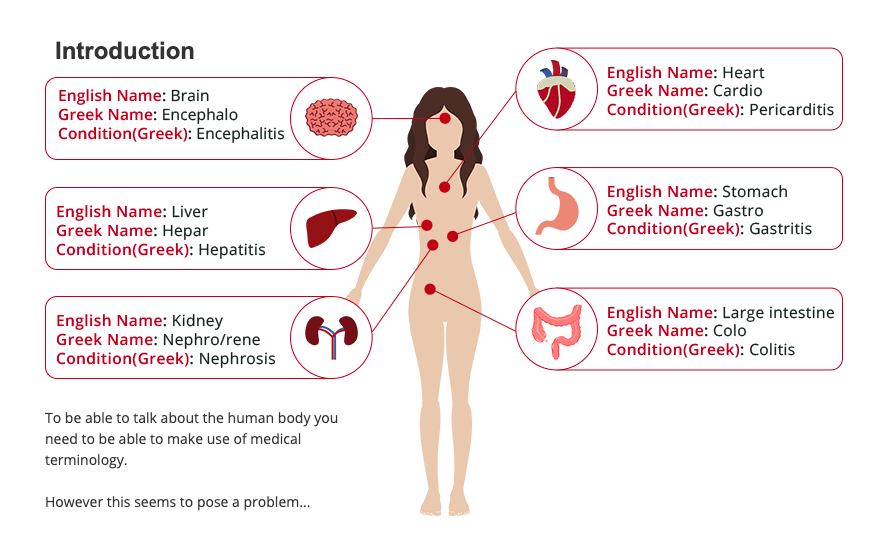DEMOIntro to Medical Terminology
1Adaptive
Tutorial30+Unique Terms2016First Deployment30mSeating Time
Tutorial
ASX wanted to embrace a more agile method of delivering training and measuring performance.
Please Note: This activity is a portion of a larger lesson. It is optimized for desktop use — we recommend viewing full-screen.
Introduction
Learning terminology is a crucial part of medicine, and any STEM related fields. At Macquarie University, Dr Elizabeth Kefallinos conducts medical terminology lectures to familiarise her students with the (often) long and complicated medical terms. The vast number of terms can sometimes overwhelm the students thus presenting a learning challenge. This emotion is generally translated to students relying on memorizing the terms instead of understanding them.
Challenge
To learn medical terms, most students use ROTE learning (i.e. learning through repetition). This method of learning does help learners to quickly recall the meaning of a term however, it does little for them to actually understand its meaning, and how they relate to their studies. With this method, when coming across an unfamiliar medical term, it is difficult for students to guess its meaning or even what the term is related to. The large number of unfamiliar terms creates added anxiety in students, adding to the difficulty.
Dr Elizabeth Kefallinos wanted to develop a way to help students learn medical terminology in a more effective way, to reduce the anxiety they experience and make it more approachable.
Solution
Dr Kefallinos and Macquarie University learning design team collaborated with Smart Sparrow to develop an online learning experience that teaches medical terminology in a more engaging way. Instead of focusing on ROTE learning (i.e. memorisation), students are guided through an experience to acquire a deeper knowledge of the terms and learning how to recognise these terms in context. A discovery learning pedagogy (showcased below) was used to make the learning experience active rather than passive.

*Fun Fact*: Medical terms are in fact built from a range of smaller and interchangeable components that are glued together to describe different things. Therefore the lesson design breaks down the medical terminology into its different components, a prefix, root and suffix to engage the students learning in an active investigation of the meaning of individual words.

In this experience, students are given the opportunity to actively investigate the meaning of these components through the activity. They can try and guess the meaning of medical terms and their components, based on their preexisting knowledge and unpack the elements throughout the lesson, before they are eventually provided with its meaning.

The learning experience is highly visual, allowing students to connect concepts and associate meanings based on other cues, such a diagram or an image. A range of components used such as links to videos, drag & drop components, help to keep students active in their learning.
An important element to this lesson is allowing students to reflect upon their choices as they proceed through the course, also known as ‘self-reflection’. Self-reflection allows students to link and construct meaning from the concepts learnt. By acting upon and processing information, synthesis and evaluating the terms self-reflection aids deeper learning.

Results
Smart Sparrow and the team at Macquarie University successfully developed an engaging and a rather non traditional medical terminology lesson that is well received by the students.
The lesson was also contributed to the BEST Network, and has been adapted multiple times by other instructors who use this learning experience in their own teaching.


